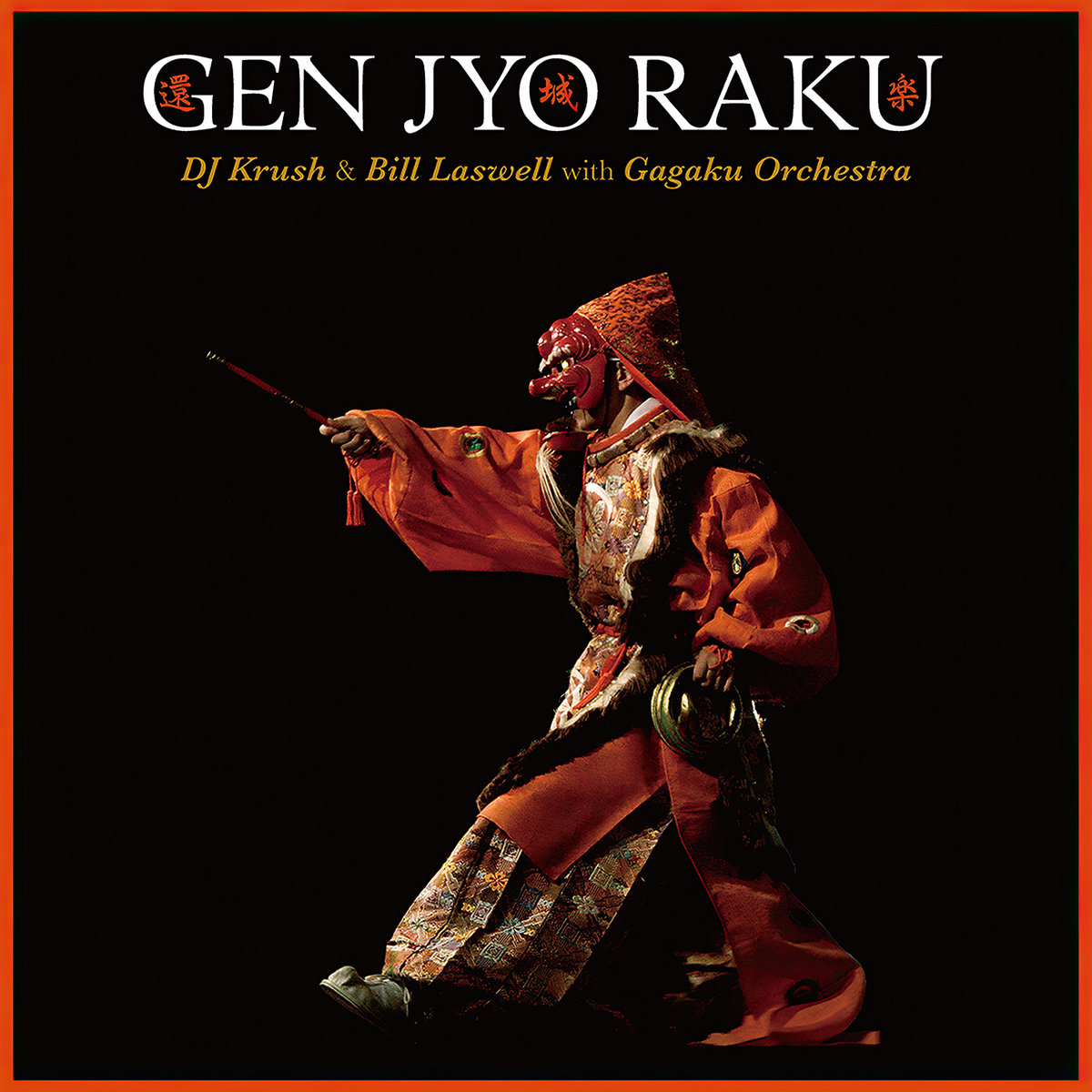BILL LASWELL, DJ KRUSH & GAGAKU ORCHESTRA


“Gagaku Doyukai” Gagaku Orchestra, performed this concert, was established in 1967 by Hironori Sono, a descendant of the ancient master musician family who had established Gagaku at its dawn. For a thousand and few hundred years, the family has been passing down the tradition from generation to generation. (His daughter Reiko Sono has been in charge since 1998.) They are one of the most serious and legitimate Gagaku musicians in Japan, core members would perform at the emperor's sacred rituals which is the highest level of Gagaku performance.
Bill Laswell and DJ Krush were the first ever artists who played with Gagaku orchestra out side of Gagaku circle ever since it's established (for 1300 or more years). Importantly, they’ve played the concert in traditional way, playing ancient tunes. (most of the current musicians would try to ask a couple of Gagaku musicians to play some modern songs with western music codes with their old instruments. The concert was a historical event.
1/ Prologue 25.04
2/ E-Ten-Raku 13.27
3/ Introduction to Gen-Jyo-Raku 6.57
4/ Gen-Jyo-Raku 1: Ko-Ranjyo 1.20
5/ Gen-Jyo-Raku 2: Ranjyo 9.02
6/ Gen-Jyo-Raku 3: Netori 0.37
7/ Gen-Jyo-Raku 4: To-Kyoku 8.02
8/ Gen-Jyo-Raku 5: Ama-Ranjyo 2.24
9/ Cho-Gei-Shi 4.11
10/ Epilogue 10.06
Recorded & mixed Monday, March 7, 2011 Setagaya Public Theater, Tokyo
Engineer: Fumio Nii
Produced & presented by Yoko Yamabe for Tokyo Rotation
Director: Yutaka Wada
Producer: Toru Watanabe
Executive producer: Yasufumi Higurashi
Photo by Toshiya Suzuki, Hiroshi Ohnuma
Original artwork designed by Takashi Igarashi
Cover design conversion by Yoko Yamabe @ Randesign
Gagaku Instruments:The orchestration will differ by tune. Normally, the orchestra contains: 3 drums (1 Shōko, 1 Kakko , 1 Tsuri-daiko), 6 strings (3 Gaku-Biwa , 3 Gaku-So) 9 winds (3 Shōs, 3 Hichirikis, 3 flutes). However, the orchestration can be very flexible.
The pitch has to normally align with Shō since the instrument is so hard to tune. They use Pythagorean tuning. A = 430Hz not 440.
There are no conductor but the left hand side drums is the one who would decide the tempo. The percussion players are the highest position, then strings, then winds. The front row - percussion, the second row - strings, the third row - wind. Each follows one's anterior row.
Wind/Horn
1 Shō (笙): mouth organ
1 Shō (笙): mouth organ
2 Hichiriki (篳篥): oboe
3 Ryūteki (龍笛): transverse flute
4 Komabue (高麗笛): flute
Strings
1 Gakubiwa (楽琵琶): 4-string lute
2 Gakuso (koto, 箏): 13-string zither (Chinese origin)
3 Yamatogoto (大和琴) (also called “wagon”):
zither (Japanese origin, with 6 or 7 strings)
Percussion/Drums
1 Shōko (鉦鼓): small gong, struck with 2 horn beaters
2 Kakko (鞨鼓): small hourglass-shaped drum struck
with 2 wooden sticks
3 Tsuri-daiko (釣太鼓): drum on a stand with ornately painted head,
played with a padded stick
4 Ikko (壱鼓): small, ornately decorated hourglass-shaped drum
5 San-no-tsuzumi (三ノ鼓): vhourglass-shaped drum
6 Shakubyoshi (笏拍子) (also called "shaku"):
clapper made from a pair of flat wooden sticks
7 Dadaiko (大太鼓): symbolic large 2 drum units indicating yin & yang
2 Hichiriki (篳篥): oboe
3 Ryūteki (龍笛): transverse flute
4 Komabue (高麗笛): flute
Strings
1 Gakubiwa (楽琵琶): 4-string lute
2 Gakuso (koto, 箏): 13-string zither (Chinese origin)
3 Yamatogoto (大和琴) (also called "wagon"):
zither (Japanese origin, with 6 or 7 strings)
Percussion/Drums
1 Shōko (鉦鼓): small gong, struck with 2 horn beaters
2 Kakko (鞨鼓): small hourglass-shaped drum struck
with 2 wooden sticks
3 Tsuri-daiko (釣太鼓): drum on a stand with ornately painted head,
played with a padded stick
4 Ikko (壱鼓): small, ornately decorated hourglass-shaped drum
5 San-no-tsuzumi (三ノ鼓): vhourglass-shaped drum
6 Shakubyoshi (笏拍子) (also called “shaku”):
clapper made from a pair of flat wooden sticks
7 Dadaiko (大太鼓): symbolic large 2 drum units indicating yin & yang
Bill Laswell: bass; DJ Krush: turntables
Gagaku Orchestra:
雅楽道友会 Gagaku Doyukai
新屋治 Shinya Osamu
福岡三朗 Fukuoka Saburo
今西靖志 Imanishi Kiyosi
加藤道信 Kato Michinobu
田中正之(舞人 dance) Tanaka Masayuki
柴山純徳 Shibayama Yoshinori
藤脇亮 Fujiwaki Ryo
福岡広希 Fukuoka Hiroki
瀧喜彦 Taki Yoshihiko
末広弓雄 Suehiro Yumio
石井千江美 Ishii Chiemi
大西貴子 Onishi Takako
熊倉一郎 Kumakura Ichiro
雅楽道友会 Gagaku Doyukai
新屋治 Shinya Osamu
福岡三朗 Fukuoka Saburo
今西靖志 Imanishi Kiyosi
加藤道信 Kato Michinobu
田中正之(舞人 dance) Tanaka Masayuki
柴山純徳 Shibayama Yoshinori
藤脇亮 Fujiwaki Ryo
福岡広希 Fukuoka Hiroki
瀧喜彦 Taki Yoshihiko
末広弓雄 Suehiro Yumio
石井千江美 Ishii Chiemi
大西貴子 Onishi Takako
熊倉一郎 Kumakura Ichiro
2021 - Bill Laswell Bandcamp exclusive (digital)